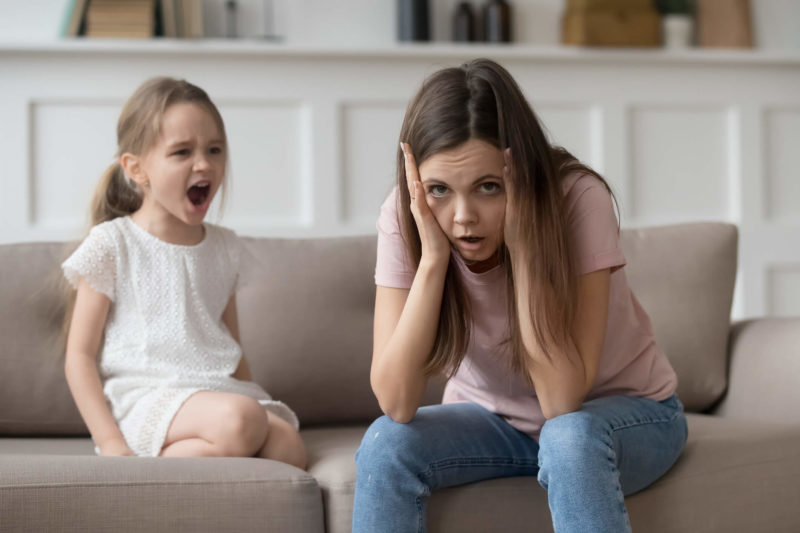

By Mary Romm, Licensed Professional counselor in Gloucester, VA
Are these some of the thoughts inside your head?
“My child is out of control.”
“I don’t enjoy spending time with my kid anymore.”
“My kid hits/bites/kicks me.”
“Another daycare kicked my child out today.”
Are you ready for help?
Who PCIT Can Help
As a therapist, I’ve utilized Parent-Child Interaction Therapy (PCIT) to help children ages 2-7 who have extreme behavioral challenges and seen them learn to listen and behave. I’ve used PCIT in my work with kids who had to wear a monitoring bracelet because they ran away so much, broke mirrors in a rage, and used the shards to carve up furniture, or parents were ready to commit them. Those same kids then listened to their parents, no longer engaged in extreme attention-seeking behaviors, and were able to calm down when they were upset and even talk about their feelings. I’ve seen it work with less intense cases, too, but those aren’t as fun to write about. PCIT works.
PCIT can treat most concerns related to children’s behavior. This includes ADHD, anxiety disorder, autism spectrum disorder, oppositional defiant disorder (ODD), selective mutism, trauma-exposed children, and more.
So What Is PCIT?
Parent-Child Interaction Therapy is an evidence-based approach that has 50 years of research behind it. Research shows it keeps children out of therapy for up to seven years, when they hit adolescence and their brain begins to rewire. Lots of the skills you will learn in PCIT will always be relevant — many of them are as good with 6-year-old kids as they are with teens or even adults. PCIT is not a therapy where another adult takes your child and works with them for an hour before bringing them back to you, and you don’t know what they did in that hour. As a therapist, I love working with this age range because I know early intervention is key. (Also, angry 5-year-olds throwing chairs aren’t nearly as scary as angry 14- or 15-year-olds.)
How Does PCIT Work?
There are two phases to PCIT. The first phase is called Child-Directed Interaction, or CDI. I like to picture CDI as laying the stable foundation of a house. CDI teaches you the skills that play therapists use. It helps you begin to enjoy playing with your child again and learn how to manage their behavior with positive attention alone. In this first phase, you’ll already see a huge reduction in behavior issues due to the child receiving quality, purposeful time with the adult and the adult learning many new tactics to manage that child’s behavior without yelling or accidentally reinforcing the behavior. This is foundational work.
The second phase is called Parent-Directed Interaction, or PDI. PDI is where you get specific discipline skills to help you control your child’s behavior. Now that the relationship foundation is completely stable and your skills are memorized, we can move into learning how to consistently and effectively discipline your child.
Throughout PCIT, you’ll track the reduction in your child’s problematic behavior on a form called an Eyberg Child Behavior Inventory, or ECBI. As a parent, you get to rate your child’s behaviors and see how those behaviors change as treatment goes on.
Is PCIT Forever?
Great news! You will graduate from PCIT in as little as 3-6 months if you do the homework and work hard in sessions. PCIT is not a vague therapy where things end when it feels right; there are specific guidelines and instructions on how to graduate from therapy, all of which are parent-driven.
How Does PCIT Compare to Other Therapies?
Ideally, because PCIT builds that strong foundation in the Child-Directed Interaction phase, it should be done before any other therapy, even before trauma therapy. Trauma therapy does include several PCIT elements; thus, it is done after PCIT. PCIT should especially be done before talk therapy, as PCIT has the research base behind it. Once kids feel safe and secure in their relationship with their parents, and once parents know how to consistently handle their child’s behaviors, then other therapies can be attempted. However, they usually are not needed at that point.
Is PCIT Covered by Insurance?
Yes, as long as your insurance has mental health care coverage and your therapist accepts insurance or is able to be an out-of-network provider, PCIT should be covered.
To learn more about PCIT, please visit this PCIT info page and PCIT International’s page for parents.
If you live in Virginia and want to start online PCIT for your child, please visit check out Mary’s practice, Willow Tree Healing Center. You can find more therapists who use PCIT by searching for therapists in your area and filtering your results by Type of Therapy > Parent-Child Interaction Therapy.

© Copyright 2021 GoodTherapy.org. All rights reserved. Permission to publish granted by Mary Romm, Licensed Professional CounselorGloucester, VA